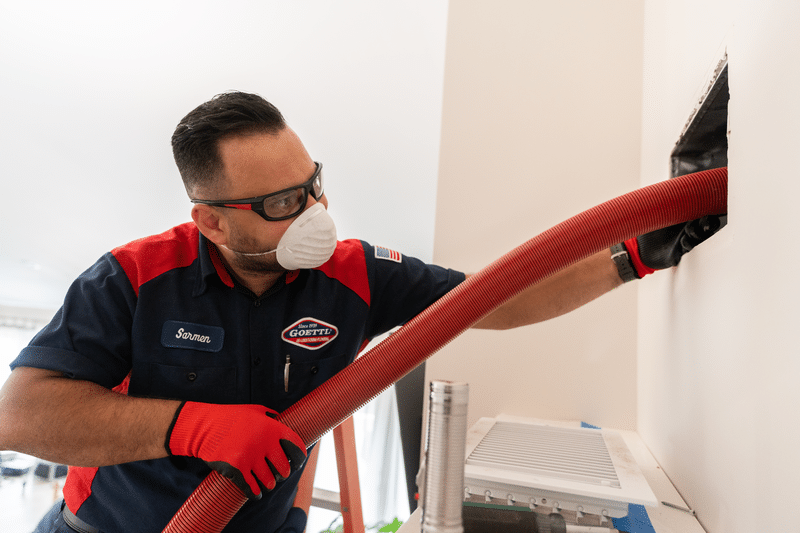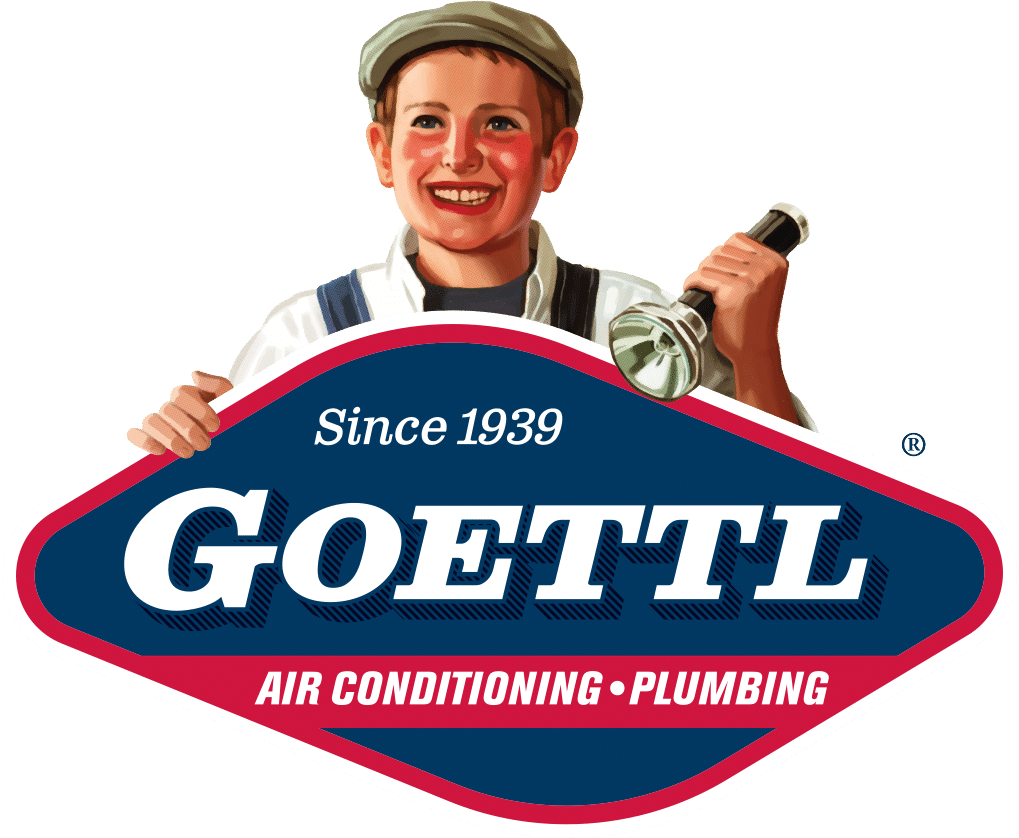
AC Repair Warning Signs: Hot Spots
When living in hot weather conditions any issues with your air conditioning system can be concerning. Hot spots throughout your home are a warning sign that your AC may be in trouble. An ideally sized and properly installed air conditioner should cool your home evenly. So, experiencing hot spots could indicate a problem with your AC system.
While not every hot spot is directly related to air conditioning problems, it’s crucial to have any issues diagnosed professionally to prevent further damage. Entrust your air conditioning repairs to our team of experts to ensure your system receives the necessary attention to perform efficiently, especially during the hottest months of the year.
This article discusses the common warning signs of air conditioning issues, focusing on hot spots in your home and their potential causes.
1. Degraded or Insufficient Insulation
One reason for hot spots in your home could be degraded or insufficient insulation. Damaged insulation can result in excessive heat transfer due to moisture, pests, or low R-value. Remember, insulation works both ways, so if your home lacks proper insulation, it can absorb excessive heat, leading to hot spots.
Identifying Insulation Issues
- Moisture Damage: Insulation can degrade due to moisture buildup, leading to microbial growth and reduced effectiveness.
- Pest Infestation: Pests like rodents can damage insulation, creating gaps and reducing its ability to regulate temperature.
- Age and Wear: Over time, insulation can deteriorate, especially in areas with extreme temperature changes, leading to decreased efficiency.
Effects of Insufficient Insulation
- Uneven Temperatures: Insufficient insulation can result in hot spots in some areas and cold spots in others, making your home uncomfortable.
- Increased Energy Bills: Poor insulation can make your unit work harder to maintain a comfortable temperature, leading to higher energy costs.
- Reduced Indoor Air Quality: Insufficient insulation can allow pollutants from outside to enter your home, affecting indoor air quality.
Insulation Types and R-Value
- Fiberglass: Commonly used in homes, fiberglass insulation is effective and has a high R-value per inch.
- Cellulose: Composed of recycled paper, cellulose insulation is eco-friendly and has good thermal performance.
- Spray Foam: Provides an air-tight seal and can be used in hard-to-reach areas, but may be more expensive.
Benefits of Upgrading Insulation
- Improved Comfort: Proper insulation helps maintain a consistent temperature throughout your home, eliminating hot spots.
- Energy Savings: Upgrading insulation can reduce energy bills by improving your home’s energy efficiency.
- Environmental Impact: By reducing your energy consumption, upgraded insulation can help lower your carbon footprint.
Insulation Inspection and Replacement
- Professional Inspection: A professional can assess your current insulation and recommend upgrades or replacements.
- DIY Inspection: You can visually inspect your insulation for signs of damage, such as gaps, moisture, or pest infestation.
- Replacement Considerations: When replacing insulation, consider factors like R-value, material, and installation method to ensure optimal performance.
2. Damaged Air Ducts
Another common issue that can cause hot spots is damaged air ducts. Central air conditioning systems utilize ducts for distributing cooled air throughout your home. If these ducts are damaged or leaking, the affected areas won’t receive the right amount of cooling. Ducts passing through unconditioned areas, like the attic, can also pull in hot air, making your AC work harder than necessary.
Types of Duct Damage
- Leaking Ducts: Holes, cracks, or disconnected joints in ductwork can allow cooled air to escape before reaching the intended area.
- Collapsed Ducts: Pressure imbalances or physical damage can cause sections of ductwork to collapse, restricting airflow.
- Restricted Ducts: Blockages from debris, dust, or pests can restrict airflow, leading to uneven cooling.
Signs of Damaged Air Ducts
- Uneven Cooling: Hot spots in some areas of your home while others remain cool.
- Increased Energy Bills: The system works harder to compensate for the loss of cooled air.
- Visible Damage: Visibly damaged or disconnected ducts in inaccessible areas like the attic or crawl space.
Causes of Duct Damage
- Age: Older ductwork may deteriorate, especially if not properly maintained.
- Poor Installation: Improperly installed ducts are more prone to damage and leaks.
- Pests: Rodents and insects can cause damage by chewing through ductwork.
Effects of Damaged Air Ducts
- Reduced Efficiency: Leaks and blockages can reduce your HVAC’s efficiency, increasing energy consumption.
- Poor Indoor Air Quality: Leaks in ductwork cause dust, allergens, and pollutants to enter the air, affecting indoor air quality.
- System Strain: Increased strain on the HVAC system can lead to premature wear and tear, resulting in more frequent air conditioning repairs.

Duct Repair and Maintenance
- Professional Inspection: A professional HVAC technician can inspect your ductwork for damage and recommend air conditioning repairs.
- Duct Sealing: Sealing leaks and gaps in ductwork can improve efficiency and reduce energy waste.
- Duct Replacement: Replacing ductwork may be necessary to ensure optimal performance in severe damage or old-age cases.
3. Faulty Thermostats/Poor Placement
If you have a zoned cooling system, ensure each thermostat is set correctly. A faulty thermostat in a particular zone can lead to discomfort. For homes without zoned systems, a thermostat placed in an area that is not representative of the overall temperature can result in uneven cooling. Goettl can help diagnose and resolve thermostat issues to ensure your home stays comfortable.
Common Thermostat Problems
- Incorrect Temperature Readings: A faulty thermostat may display inaccurate temperature readings, leading to improper cooling.
- Unresponsiveness: The thermostat may not respond to changes in settings or fail to turn the HVAC system on/off as intended.
- Erratic Behavior: The thermostat may exhibit erratic behavior, such as frequent cycling or sudden temperature changes.
Impact of Faulty Thermostats
- Uneven Cooling: Incorrect thermostat readings can result in some areas of the home being too hot or too cold.
- Energy Waste: A malfunctioning thermostat can cause the HVAC system to run unnecessarily, leading to higher energy bills.
- Discomfort: Inaccurate temperature control can lead to discomfort for occupants, especially during extreme weather conditions.
Thermostat Placement Considerations
- Proximity to Heat Sources: Thermostats near heat sources like lamps or appliances may give inaccurate readings.
- Sun Exposure: Direct sunlight can affect thermostat readings, leading to incorrect temperature settings.
- Airflow Obstructions: Thermostats placed near furniture or curtains may not accurately sense room temperature.
Thermostat Troubleshooting and Solutions
- Calibration: A professional HVAC technician can calibrate the thermostat to ensure accurate temperature readings.
- Relocation: If the thermostat is poorly placed, relocating it to a more central and representative location can improve performance.
- Replacement: In cases of irreparable damage or outdated thermostats, replacing the unit with a newer model may be necessary.
Benefits of Professional Thermostat Services
- Optimized Comfort: Professional thermostat services can ensure that your HVAC system maintains optimal comfort levels throughout your home.
- Energy Efficiency: Properly functioning thermostats can help reduce energy waste and lower monthly utility bills.
- Long-Term Savings: Investing in thermostat maintenance and repairs can increase the lifespan of your HVAC system, saving you money on costly replacements.
Take Action Today!
If you’re experiencing hot spots in your home, addressing the underlying issues promptly is crucial. Professional diagnosis and repairs can help maintain even cooling throughout your home, ensuring comfort during the hot summer. Contact Goettl today for expert assistance with your air conditioning system.
Testimonials
What Our Customers Say About Us
What stood out the most was their attention to detail and genuine care for customer satisfaction. They took the time to assess my system thoroughly, offered honest recommendations, and completed the work efficiently without cutting corners. My home is now noticeably more comfortable, and I feel confident knowing everything was handled by true professionals.
If you’re looking for reliable, top-quality HVAC service, I highly recommend Goettl. They truly live up to their reputation and exceeded my expectations in every way.
Roger came for my rejuvenation appointment. He was very curtious and knowledgeable. I was happy he showed up prompt with great respect to my AC unit and property. I relaly appreciate him and his attention to detail. I would highly recommend him for any of your AC needs.
Jesus Gloria AC service review. He did a great job today and I would highly recommend him for any AC service needs. He was very knowledgeable and courteous. He helped add a surge protector on my outside unit for added protection. I look forward to working with him in the future.
Well, I had some plumbing issues at my residence, and I called "Goettl Plumbing." Great results, too 🤗.
My water wouldn't stay hot, and after contacting Justin at Goettl Plumbing, he sent out Frank, a service technician with over 20 years of plumbing experience. Frank spent a good bit of time studying/ evaluating my plumbing functions, consulted with an on-site Goettl supervisor, and determined my plumbing issues.
After they conferred those issues with Justin, a plan for resolution and payment was determined, and work started the next day.
Greg arrived that morning; accessed the work areas, determined the tools and equipment he needed, and got right to work.
By the end of the day, Greg had installed three (3) Replacement Single Handle Tub/Shower Valves, a Pressure reducing valve, and a Thermal expansion tank with vacuum breaker - - RESULTS: Hot Water 💧
In two days, I witnessed Super Communication, Super Teamwork, and some old-time "1990-1991" Professionalism ... thanks,
"GOETTL Air Conditioning & Plumbing" for A Job Well Done 👏🏼
After note. Cameron came back by a day later to check on readings he wasn't able to get on first appointment. I have high confidence in his work. I'm very likely to work with them again
Brayan and Marcos did an awesome job on the new ac installation. Installed with no issues and has been on ever since. Perfect time with summer coming up. Walked through and job was very clean and organized. Great work ethic. Great guys.
Update - our air conditioner went out today (10/26/23) and JEHAD showed up to repair the issue but the issue was bigger than expected. Tomorrow we will have a brand new system! Goettl is an EPIC firm that treats customers right. Thank you again JEHAD for going above and beyond.
Goettl is the epitome of what excellent customer service is! Our Drain King, DAREAN, addressed all of our questions and concerns and not only unclogged our drain but went above and beyond to show us our drains leading to the street were free and clear of any other issues. Thank you Darean and thank you Goettl for a great experience!
Update: great experience with Edgar Loredo who kept it real with us and was very transparent. I appreciate his honesty and recommendations. Will be requesting him as our technician in the future if we choose to use Goettl
2/15/23
Thank you, Jorge G. Again for being so honest about our unit issues.
Kathy
H. Navarro
Frank Soto, plumber was very thorough in his assessment of the problem. Provided options and was patient in waiting for our decision. We are very pleased with Frank's knowledge plus his warm personality was a plus. Thank you Frank.
H. Navarro
Jeremy Ortega service tech did an excellent job removing, cleaning and reinstalling the flame sensors along with servicing the HVAC blowers. We are set for the next 2 years. Thanks again Jeremy.
H. Navarro
Thank you!
09/19/2024 - Husam Ismail did an outstanding job!!! Very personable and honest, so far with my experience with
Goettl he is the best technician that i have encountered.
02/11/2024 - Josh L. did a fabulous job!!! He was very personable and fast. Great experience, I would recommend Goettl to anyone.
Today is 21 July Sam stopped by and service was excellent 👌. Ralph was excellent, great customer service
Thank you goettl
Explain testing and clarified cost.
I was impressed.
Brayan, Jason, and Christian were the three techs who installed the unit and new ducts. They showed excellent work ethic. They cleaned up all debris, and most importantly, the system works perfectly. Today Ignacio came and inspected the work, and found no problems at all. The entire team has earned 5 stars.
November 6, 2024. The team Brayan, Christian and Jason worked awesome in replacing our whole A/C system and air ducts. They were respectful of our property, answered our questions without hesitation. They all did a fantastic job. We thank ya'll for your services and definitely recommend your business. We appreciate you.
November 7, 2024: Ignacio inspected the newly installed air condition and duct system. He was very knowledgeable, and good expertise. He listened and answered our questions and concerns..he helped us to install our Sensi a/c and heater app..
Fe Alexander
Leticia and Ed Baca
We had an blockage in our sewer line.
Tyler Leija was dispatched the same day, and found the blockage using a camera tool.
He cleared the blockage temporarily.
The actual fix would require digging up and replacing the bad area of pipe.
Paulo "Adrian" Dado and his crew came out the next day with backhoe, dug up the area, and replaced the section of pipe.
The next day, after inspection, Adrian and his crew filled in the hole and then cleaned up the area.
This is a brief description. There was A LOT of work involved.
Very professional work.
Our tech Jorge that came out the day before helped quickly assess the situation and get us set up for a new system and water heater. Jorge was very friendly, would highly recommend!
Frank did an excellent job at explaining every thing in terms that were understandable to both myself and my wife. This greatly assisted in making the right decision to look at all options on either repair or update/purchase for the future and in the long term, saving money.
Will definitely call and use
Goettle again and I will ask if Darrean could help again.
Couldn’t be happier. Came all the options




































































































































































































